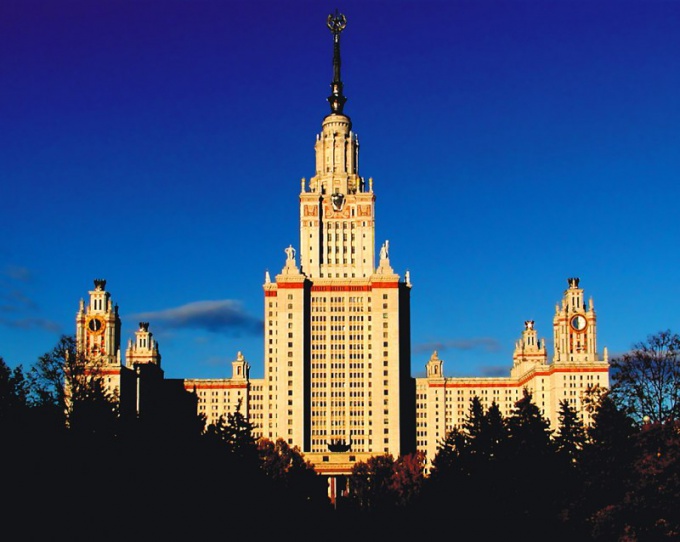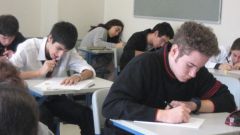The Russian system of higher education includes several thousand schools, each of which is referred to as the University, Institute or Academy. Each of these names has its differences, including the level of the teaching staff, the number of enrolled graduate students, the structure and other features.
The first higher education institution of the Russian Empire had a clear division between classical and applied. Classical universities called exclusively by the universities (Moscow, Saint-Petersburg and Kharkiv Imperial University and gave the students knowledge in the field of literature, linguistics, history, mathematics and chemistry. In contrast to the classical universities of applied educational institutions are called institutions (Saint-Petersburg and Novocherkassk Polytechnical institutes) or high schools (Imperial Moscow higher technical school). Students studied natural and engineering Sciences, medicine, and law.
In the Soviet Union the status of universities has been stored for several major universities (Moscow state University. Lomonosov, Saint Petersburg State University). Other existing and newly opened schools were called and gave institutions of applied higher education.
To obtain the status of University not less than 60% of its teaching staff needs to have a degree. Thus, University students have the opportunity to gain knowledge from practicing scientists who have made certain achievements in the field of its competence.
The Institute may be a separate institution and become part of the larger University as a structural unit, bringing together several faculties, departments which are preparing students in one discipline (Engineering-economic Institute, Kazan research Technical University). Universities may not be composed of individual institutes, and divided exclusively on the faculties.
In University for every 100 students of day form of education should have no less than 4 graduate students, while the Institute is sufficient to prepare the defence of the thesis only two people out of a hundred. Furthermore, the themes of dissertations of applicants who attended University, suggesting the realization of fundamental scientific researches, and dissertations defended in institutions, are mostly of an applied nature.
Current state of higher education in Russia is characterized by a transition from a large number of small higher education institutions to the formation of a major educational research centres, accumulating around the scientific potential of the industry or region. Over the last decade the number of institutions in the country significantly, since some of them were abolished, and the other part became part of larger universities. The enlargement on the regional principle is to combine several higher education institutions in the Federal universities (southern, far East), and branch principle provides for the creation on the basis of leading technical universities, National Research universities.
The history of the division of universities into institutes and universities
The first higher education institution of the Russian Empire had a clear division between classical and applied. Classical universities called exclusively by the universities (Moscow, Saint-Petersburg and Kharkiv Imperial University and gave the students knowledge in the field of literature, linguistics, history, mathematics and chemistry. In contrast to the classical universities of applied educational institutions are called institutions (Saint-Petersburg and Novocherkassk Polytechnical institutes) or high schools (Imperial Moscow higher technical school). Students studied natural and engineering Sciences, medicine, and law.
In the Soviet Union the status of universities has been stored for several major universities (Moscow state University. Lomonosov, Saint Petersburg State University). Other existing and newly opened schools were called and gave institutions of applied higher education.
Faculty
To obtain the status of University not less than 60% of its teaching staff needs to have a degree. Thus, University students have the opportunity to gain knowledge from practicing scientists who have made certain achievements in the field of its competence.
Differences in the structure
The Institute may be a separate institution and become part of the larger University as a structural unit, bringing together several faculties, departments which are preparing students in one discipline (Engineering-economic Institute, Kazan research Technical University). Universities may not be composed of individual institutes, and divided exclusively on the faculties.
Post graduate training
In University for every 100 students of day form of education should have no less than 4 graduate students, while the Institute is sufficient to prepare the defence of the thesis only two people out of a hundred. Furthermore, the themes of dissertations of applicants who attended University, suggesting the realization of fundamental scientific researches, and dissertations defended in institutions, are mostly of an applied nature.
Development trends of higher educational institutions
Current state of higher education in Russia is characterized by a transition from a large number of small higher education institutions to the formation of a major educational research centres, accumulating around the scientific potential of the industry or region. Over the last decade the number of institutions in the country significantly, since some of them were abolished, and the other part became part of larger universities. The enlargement on the regional principle is to combine several higher education institutions in the Federal universities (southern, far East), and branch principle provides for the creation on the basis of leading technical universities, National Research universities.





